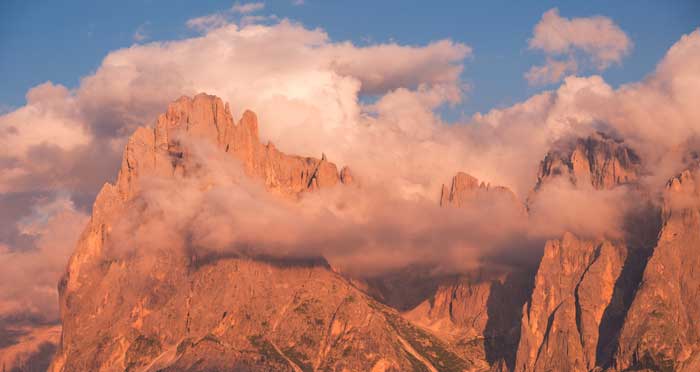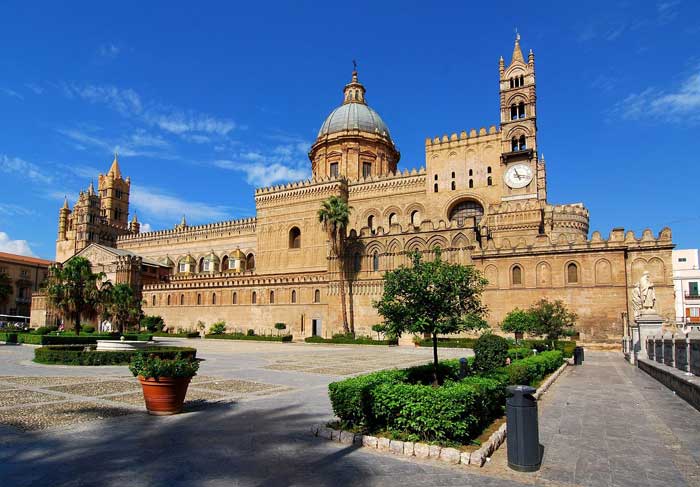View of Assisi, Italy, the Birthplace of St Francis

In Assisi, Italy shows its best face. It is one of Italy’s most beautiful towns, located in one of Italy’s most beautiful regions, Umbria.
Apart from boasting spectacular old buildings, Assisi, Perugia, Italy also inspires the visitor with its special atmosphere and with its rich spiritual, cultural and historical heritage.
Assisi is the home town of St. Francis, the 12th century friar and preacher who gave up all his possessions, dedicated his entire life to helping others and founded the Franciscan order that brought about a religious revolution.
Assisi, Italy has been for centuries and still is a major Catholic center for pilgrimage, but visitors who are more interested in art and architecture will also be fascinated by this superb town with winding medieval streets, sacred churches and Roman ruins.
What To See In Assisi, Italy
There are a lot of things to do in Assisi, Italy such as visiting the emblematic churches, the castle, the hermitage above the town and so much more. Here are a few tips and must-see attractions.
The Basilica di San Francesco d’Assisi
The Basilica of Saint Francis of Assisi is one of the major places of Christian pilgrimage in Italy. It overlooks the city from the spectacular Mount Subasio and offers an unforgettable spiritual experience.
Together with the connected monastery, the Sacro Convento, it has been a UNESCO World Heritage Site since the year 2000.
On July of the year 1228 Pope Gregory IX set the foundation stone for the construction of the majestic basilica, two years after the death of Saint Francis. It was built into the side of a hill and combines both the Romanesque and Gothic styles.
The Basilica comprises a crypt containing the remains of the patron saint of Italy and two churches —the Upper Church and the Lower Church. Both are decorated with frescoes by late medieval painters from the Tuscan and Roman schools, and include important artworks by Giotto and his teacher Cimabue, among others.
The Impressive Sacro Convento
Next to the Basilica of St Francis stands the Sacro Convento, a Franciscan friary with formidable walls that dominates the valley below making it look like a fortress. The friars custody the relics of Saint Francis with great devotion.
It is said that St Francis wanted to be buried outside the city walls, the place called Collo d’Inferno, Hill of Hell in English, where criminals were hanged, because Jesus of Nazareth was also killed like a criminal outside Jerusalem.
The Sacro Convento houses an extensive library that contains very valuable ancient manuscripts and early printed books and a museum, the Museo del Tesoro, with sacred works of art of international origin.
Since the second half of the 20th century, it added the Perkins collection, donated by the American art historian and critic, who died in Assisi, Italy in 1955.
Don’t Miss The Grave of St. Francis
The tomb of Saint Francis is in the crypt of the Lower Basilica of San Francesco d’Assisi. You can reach the crypt through a double stairway halfway down the nave.
The burial place of Saint Francis was hidden for almost six centuries after the saint’s death to prevent the theft and spread of his relics in medieval Europe. Saint Francis of Assisi’s remains were only rediscovered in 1818.
The architect Pasquale Belli built a neoclassic crypt under the Lower Basilica by order of Pope Pius IX. However, between 1925 and 1932 another Italian architect, Ugo Tarchi, redesigned it in neo-Romanesque style.
The Basilica of Santa Chiara
Located in the historic center, the Gothic Basilica di Santa Chiara is an important place of worship. It is dedicated to Saint Clare of Assisi, another saint who lived in the city.
She was one of the first followers of Saint Francis of Assisi and founded a monastic religious order for women in the Franciscan tradition, the Order of Poor Ladies or Order of Saint Clare. The Basilica contains the remains of Saint Clare and Saint Agnes of Assisi, her younger sister.
The Cattedrale di San Rufino di Assisi
Expecially, the façade of the Duomo is one of the most significant works in Umbrian Romanesque style.
The Assisi Cathedral in Italy is dedicated to St. Rufino, martyred in the 3rd century, and it is the major place of worship in the town of Assisi. It stands in the square with the same name, originally the site of a Roman temple.
Walk to the Medieval Fortress of Rocca Maggiore
The castle of Rocca Maggiore as we know it today dates back to the 14th century, but the first documented mention of the fortress was in 1173. It was destroyed by a popular uprising around 1198 and rebuilt in 1356 respecting the original forms to a great extent. It was Assisi’s best defense for many centuries.
Located on the top of the hill overlooking the valley, the fortress gives the visitor an excellent view not only of the town of Assisi but of the entire Perugia region as well.
It was in Rocca Maggiore that Franco Zeffirelli shot some scenes of the film Brother Sun, Sister Moon about the life of Saint Francis of Assisi.
Goethe and the Temple of Minerva
In Assisi, Italy shows its ancient face as well. The partially revealed Roman amphitheater is right around the corner from the city’s main square.
In the Piazza del Comune you will see the Palazzo del Capitano del Popolo from the mid-thirteenth century with the adjoining Torre del Popolo that means People’s Tower.
Finally the Temple of Minerva, an ancient Roman building with six well-preserved Corinthian columns, also faces the Piazza del Comune. In the sixteenth century it was transformed into a church, Santa Maria sopra Minerva.
During his trip to Italy in the 18th century, the great German poet Johann Wolfgang von Goethe, visited the Temple of Minerva and described it in his book Italian Journey based on Goethe’s diaries. Many critics have marveled at the fact that while in Assisi Goethe didn’t choose to see the legendary Giotto frescoes in the Basilica of San Francesco d’Assisi!
Stroll Around the Town of Assisi
Take a walk around Assisi’s Piazza del Comune, the main square, and try one of the cozy, friendly and inviting little cafes or a family-owned restaurant where you can enjoy traditional dishes, such as Italy’s world-famous pizza and you can also try local wine.
Assisi is full of history and despite the many visitors it has a captivating and serene atmosphere. Nestled among the hills, the walled city is peaceful, with cobble-stoned streets that will make you want to walk on just to admire the beautifully rugged buildings.
The city is partially built on a hill, so be prepared to do a few climbs while you walk around, but the entire settlement is so charming, with so much to offer that you won’t even notice how steep the lanes are.
View the Endearing Images of Assisi, Italy
The city is spectacular in real life, but if you like browsing pictures before you set off on your journey to Assisi, Italy, click the button below to view the gallery of Assisi, Italy, Images.


![Famous Rome Piazza Navona: Fountains, History and Traditions [+ 17 Images] Four Rivers Fountain, Piazza Navona](https://belleitaly.com/wp-content/uploads/four-rivers-fountain-piazza-navona-1.jpg)



